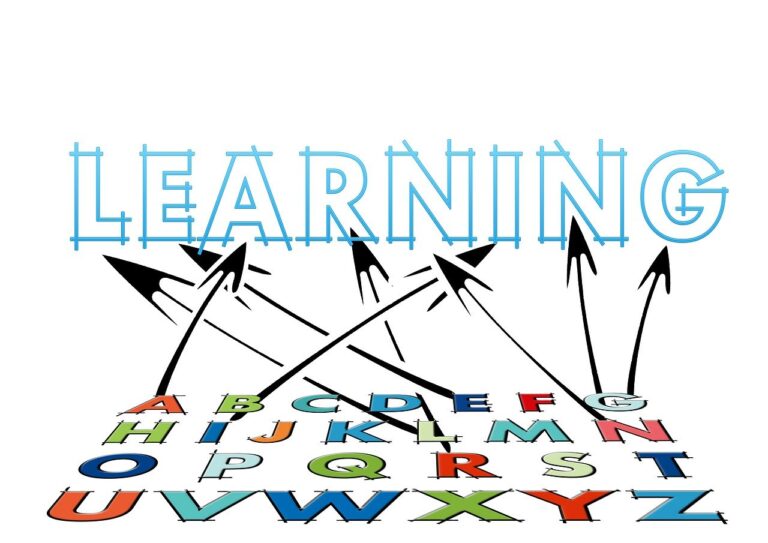Emotional Detachment: 7 Powerful Reasons Why Letting Them Be Brings Inner Freedom
Table of Contents
Introduction
Have you ever felt overwhelmed by other people’s problems, emotions, or demands? The weight of carrying everyone else’s burdens can be exhausting, leaving little energy for your own wellbeing. This is where emotional detachment comes in – not as a cold disconnection from others, but as a liberating practice that protects your inner peace while allowing you to remain compassionate.
Emotional detachment is the art of creating healthy psychological distance between yourself and external situations or people’s behaviors that you cannot control. It’s about understanding where your responsibilities end and where others’ begin. By mastering this skill, you gain the freedom to respond thoughtfully rather than react impulsively to life’s challenges.
In this post, we’ll explore why emotional detachment is essential for your mental health and how practicing it can transform your relationships and inner world. Far from being uncaring, this mindset allows for deeper, more authentic connections with others while preserving your emotional balance.
The Power of Emotional Detachment
Emotional detachment represents a fundamental shift in how we relate to circumstances beyond our control. When we’re emotionally entangled with others, their moods, choices, and problems become our own—creating unnecessary suffering and draining our energy reserves.
The practice of emotional detachment allows us to break free from this pattern. Rather than abandoning care or compassion, it enables us to offer support without becoming consumed by situations we can’t resolve. This balanced perspective is particularly valuable in:
- Relationships with people struggling with addiction or mental health issues
- Workplace dynamics where personalities clash
- Family situations with longstanding patterns of conflict
- Social media interactions that trigger strong emotional responses
According to Psychology Today, healthy detachment actually strengthens our capacity for genuine empathy while protecting us from emotional burnout. It’s not about building walls but rather creating intentional boundaries that allow us to remain present without becoming depleted.
By cultivating emotional detachment, we develop what psychologists call “differentiation”—the ability to maintain our sense of self while in close relationships with others. This skill forms the cornerstone of emotional intelligence and psychological resilience.

7 Reasons Why Letting Them Be Brings Inner Freedom
1. Protecting Your Mental Energy
When you practice emotional detachment, you reclaim control over your mental energy. Rather than allowing external situations to dictate your emotional state, you choose where to invest your psychological resources.
This conservation of energy is transformative. Instead of feeling drained by the drama and challenges of others, you maintain your vitality. This reserved energy can then be channeled into personal growth, creative pursuits, or meaningful relationships that truly deserve your attention.
Consider how often you’ve felt exhausted after absorbing someone else’s negative emotions or problems. Emotional detachment creates a buffer zone that prevents this energy transfer while still allowing you to offer genuine support.
2. Breaking Codependency Patterns
Emotional entanglement often stems from codependent patterns where your sense of self becomes wrapped up in another person’s wellbeing or behavior. This unhealthy dynamic blurs boundaries and creates responsibility confusion.
Practicing emotional detachment helps disrupt these patterns by:
- Clarifying where your responsibilities end and others’ begin
- Reducing the urge to rescue or fix others
- Decreasing anxiety about others’ choices or emotions
- Reinforcing your separate identity and needs
As you become more emotionally detached, you’ll notice a natural shift toward healthier interdependence in relationships. This balance allows for mutual support without sacrificing autonomy or enabling destructive behaviors.

3. Creating Healthier Boundaries
Emotional detachment and boundary-setting go hand in hand. When you detach from outcomes you can’t control, you naturally establish clearer boundaries about what you will and won’t accept in relationships.
These boundaries protect your emotional wellbeing while showing others how to respectfully engage with you. Unlike walls that block connection, healthy boundaries facilitate more authentic relationships based on mutual respect rather than emotional manipulation or obligation.
Through emotional detachment, you develop the confidence to articulate your boundaries without guilt or excessive explanation. This clarity reduces relationship friction and establishes a foundation for healthier interactions.
4. Reducing Emotional Reactivity
One of the most immediate benefits of emotional detachment is the significant decrease in emotional reactivity. When you’re not attached to specific outcomes or responsible for others’ emotions, you gain the space to respond thoughtfully rather than react impulsively.
This shift from reactivity to responsiveness manifests as:
- Fewer emotional outbursts or regrettable comments
- Reduced stress responses during conflict
- Greater composure when facing criticism
- More consistent emotional stability regardless of external circumstances
Research from Mindful.org shows that creating this “response gap” through practices like emotional detachment significantly improves relationship satisfaction and personal wellbeing over time.
5. Gaining Clarity and Perspective
Emotional entanglement clouds judgment. When you’re over-invested in others’ problems or reactions, your perspective narrows, making it difficult to see situations objectively.
Emotional detachment creates psychological distance that allows you to:
- Recognize patterns more clearly
- Consider multiple perspectives
- Make decisions based on wisdom rather than emotion
- Identify manipulative behaviors more quickly
This expanded awareness empowers you to navigate complex interpersonal situations with greater discernment. Rather than being caught in the emotional crosscurrents, you maintain an elevated perspective that reveals solutions and insights previously hidden by emotional involvement.

6. Empowering Self-Sufficiency
By practicing emotional detachment, you encourage self-sufficiency—both in yourself and others. When you stop overextending yourself to solve others’ problems, you create space for them to develop their own resources and coping skills.
This principle applies equally to your personal growth. As you detach from seeking external validation or approval, you strengthen your internal compass and build confidence in your own judgment.
The result is a liberating sense of agency. You recognize that while you can’t control others’ choices, you maintain complete authority over your own responses, boundaries, and wellbeing.
7. Cultivating Inner Peace
Perhaps the most profound benefit of emotional detachment is the inner peace it cultivates. When your emotional state isn’t tethered to external circumstances or others’ moods, you discover a reservoir of tranquility that remains accessible regardless of what’s happening around you.
This inner peace becomes a stable foundation from which you can:
- Remain centered during conflict or chaos
- Approach challenges with equanimity
- Experience joy independent of external validation
- Maintain perspective during difficult times
Unlike fleeting happiness that depends on favorable conditions, this peace represents a sustainable state of wellbeing that withstands life’s inevitable ups and downs.
How to Practice Emotional Detachment
Developing emotional detachment is a process that requires consistent practice and mindfulness. Here are practical approaches to incorporate this powerful skill into your daily life:
Mindful Awareness Exercises
Start by simply observing your emotional entanglements without judgment. Notice when you feel responsible for others’ emotions or when your mood shifts based on someone else’s behavior.
Try this mindfulness exercise:
- Set aside 5-10 minutes in a quiet space
- Focus on your breathing while scanning your body for tension
- Bring to mind a situation where you feel emotionally entangled
- Notice the physical sensations this creates without trying to change them
- Visualize creating space between yourself and the situation
- Repeat the phrase: “This belongs to them, not to me” or “I can care without carrying”
Regular practice of this exercise strengthens your ability to detach in real-time situations.
The Observation Technique
Develop the habit of mentally stepping back to observe interactions as if you were a neutral third party. This “witness perspective” creates immediate emotional distance without requiring you to physically withdraw.
Practice by:
- Imagining watching the interaction from across the room
- Noticing the dynamics without labeling them as good or bad
- Asking yourself: “If I were giving advice to a friend in this situation, what would I say?”
- Resisting the urge to immediately fix or change what you observe
This technique is particularly effective during heated discussions or when dealing with someone’s emotional reactions.
Daily Detachment Rituals
Incorporate specific practices into your routine that reinforce emotional boundaries:

- Morning intention-setting: Begin each day by identifying areas where you need healthy detachment
- Energy clearing: Use symbolic actions like washing your hands or changing clothes after emotionally draining interactions
- Verbal affirmations: Create personal mantras like “Their journey belongs to them” or “I can be supportive without taking responsibility”
- Evening reflection: Review instances where you maintained healthy detachment and note how it affected your wellbeing
For more comprehensive practices, check out our related post on Building Unshakeable Inner Confidence here at www.lifesmartskills.com
Common Misconceptions About Emotional Detachment
Despite its benefits, emotional detachment is often misunderstood. Let’s clarify some common misconceptions:
Misconception #1: Emotional detachment means not caring
In reality, emotional detachment allows for deeper, more authentic caring. When you’re not entangled in rescuing or fixing others, you can offer genuine support without hidden agendas or emotional exhaustion. True compassion comes from a centered place, not from emotional enmeshment.
Misconception #2: Practicing detachment makes you cold or distant
Healthy emotional detachment doesn’t diminish your capacity for connection. Instead, it creates space for more meaningful engagement by removing the static of codependency, approval-seeking, or emotional reactivity. Many find their relationships deepen as they practice emotional detachment.
Misconception #3: Detachment means avoiding difficult conversations
Emotional detachment actually empowers you to engage in challenging discussions with greater clarity and composure. Rather than avoiding difficult topics, you can address them from a grounded perspective that’s not clouded by excessive emotional investment in the outcome.
Misconception #4: It’s a form of emotional suppression
Unlike suppression, which involves denying or burying emotions, emotional detachment is about fully acknowledging feelings while choosing not to be controlled by them. This mindful awareness of emotions without being swept away by them represents emotional maturity, not avoidance.
Conclusion
Emotional detachment represents a profound shift in how we relate to both ourselves and others. By creating healthy psychological distance from situations beyond our control, we protect our inner peace while paradoxically becoming more available for authentic connection.
The seven benefits we’ve explored—protecting mental energy, breaking codependency, creating boundaries, reducing reactivity, gaining clarity, empowering self-sufficiency, and cultivating inner peace—collectively transform our experience of relationships and life challenges.
As you begin practicing emotional detachment, remember that it’s a skill developed over time. Be patient with yourself as you learn to distinguish between caring and carrying, between compassion and codependency. With consistent practice, you’ll discover the liberating truth that letting others be who they are gives you the freedom to be who you truly are.
Your Turn: How have you practiced emotional detachment in your life? What challenges have you faced in creating healthy boundaries? Share your experiences in the comments below, or if you found this article helpful, pass it along to someone who might benefit from these insights.








